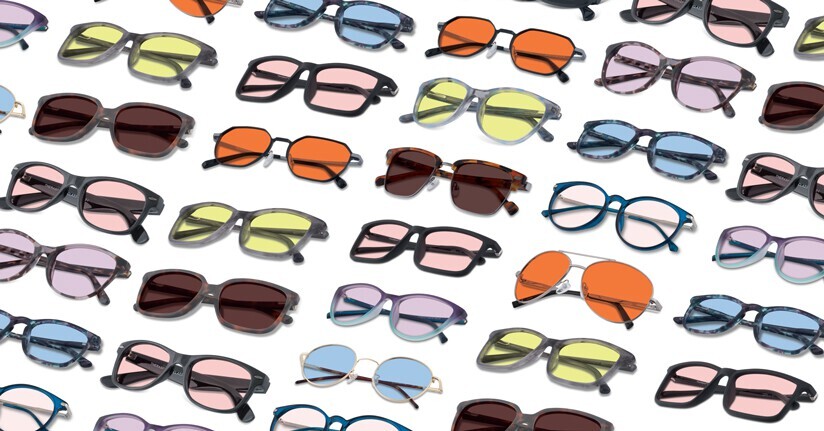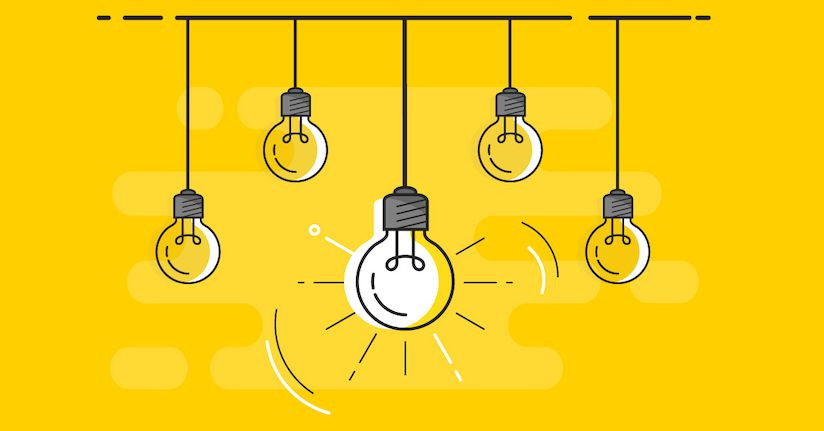Photophobia, Light Sensitivity: Facts and Statistics
If certain light causes you pain or other symptoms, you may be experiencing photophobia, which is generally defined as a strong sensitivity to light. With millions of people suffering from it, you should be aware of these important facts about light sensitivity.
Light sensitivity is a symptom of several conditions
Photophobia sounds like it could be its own diagnosed condition or disorder, but it actually represents a symptom of numerous conditions. Some of the most prominent ones include:
| Prevalence of Light Sensitivity by Condition | ||
| Migraine (all types) | 80% to 90% have light sensitivity | Read more ➜ |
| Cluster Headache | 56% to 91% report photophobia | Read more ➜ |
| Vestibular Migraine | 60% or more are light sensitive | Read more ➜ |
| Post-concussion syndrome | At least 43% are shown to have light sensitivity | Read more ➜ |
| Traumatic brain injury | 40% to 55% deal with sensitivity to light | Read more ➜ |
| Dry eye | More than 75% report photophobia | Read more ➜ |
| Fibromyalgia | Light sensitivity affects 70% or more | Read more ➜ |
| ADD or ADHD | 70% or more are sensitive to light | Read more ➜ |
| Photosensitive epilepsy | Between 3% and 40% are triggered by light | Read more ➜ |
In addition, photophobia can also be a complication of an eye or head injury or even surgery too.
There is a difference between photophobia and photosensitivity
People often use the term “photosensitivity” as a synonym for photophobia, but they are in fact different. Photosensitivity more broadly refers to any reaction to light exposure—most frequently describing specific skin-related complications (such as with Lupus). However, photosensitivity can encompass the eye-related and neurological responses that define photophobia. Still it can be confusing to see both of these used interchangeably across multiple conditions. Learn more about their differences here.
Light sensitivity can be temporary or chronic and long term
Most of us have probably felt a short burst of light sensitivity; maybe we draw the curtains first thing in the morning, and our eyes become sensitive to the surrounding brightness. Similarly, somebody who recently had eye surgery or endured a concussion might have short-lived photophobia as the body heals. But for millions of others—particularly those with a chronic condition—sensitivity to light can persist for years. And how long will depend on their condition and prognosis, treatment options, and other environmental factors.

Chronic photophobia is a neurological symptom
It might seem like persistent sensitivity to light is exclusively an eye problem, but most experts classify it as a neurological symptom because of its implication in central nervous system processes. Without getting too much into the science, activation in the trigeminal nerve (which is core to how we feel and process pain) as well as light-sensitive cells in the eye (separate from vision) are possible explanations for the onset of photophobia.1 In addition, migraine-specific research has suggested that it may be brought on by dopamine imbalances in the brain.2 Ultimately, we may not know exactly what is going on, but there is definitely a connection between the eyes and the brain.
Dry eye may be the most common cause of light sensitivity
Dry eye is known to affect as many as 40 million people worldwide, more than migraine and other conditions. And with three-quarters of them describing symptoms of light sensitivity and photophobia, it stands to reason that dry eye is one of the most prominent causes of this painful issue.
Physical reactions can vary among persons with light sensitivity
Probably the most instinctual reaction for somebody with photophobia or light sensitivity is to cover his or her eyes. But there may be any number of physiological responses to light exposure, creating a subset of light sensitivity symptoms such as:
- Eye squinting
- Tearing up of the eyes
- Nausea
- Lightheadedness
In addition, light sensitivity has the unfortunate power to bring on headaches and migraine attacks, fibromyalgia flares, dry eye symptoms—really, any symptoms of a chronic disorder.
Photophobia is often associated with more emotional symptoms
Generally, chronic illness has been linked with higher levels of emotional side effects, but the specific presence of sensitivity to light may make it worse, according to research. Anxiety, depression, fear, anger or irritability, and stress are among the mood-related changes that have been observed in photophobic individuals.3,4

Specific light sources are more likely to aggravate light sensitivity
Have you ever just felt unpleasant under fluorescent lighting or after spending a few hours on your computer? There is a reason that these are repeatedly cited as troublesome sources of light, and it has to do with the amount of blue light wavelengths they emit. Those light-sensitive cells mentioned previously are most reactive to blue light, making them ticking time bombs for a photophobic person. Artificial sources also can pose additional challenges with visible and non-visible flickering, but even natural light has a significant amount of blue wavelengths—making the risk of just about any light exposure widespread for sensitive individuals.
Light does not have to be "bright" to cause pain or other symptoms
Let’s do some myth busting here—light does not have to be excessively bright or intense in order to affect a person with photophobia. Of course, high levels of brightness absolutely can bring about their symptoms, but research shows that light-sensitive individuals have a lower acceptance for light in general; this means even indirect or low intensity light sources can cause problems.5
Light sensitivity is hard to diagnose
There is no perfect test for photophobia; it typically is assessed first by understanding the condition that may be causing it and then by asking specific questions that determine the extent to which light affects you. Unfortunately, our memory of the things that might stimulate our symptoms is not incredibly reliable, if we even recognize that there are specific factors. Interestingly, the use of sunglasses indoors at the doctor’s office is one of the earliest indicators for medical professionals to learn that light is bothersome.
There are no medications that treat photophobia and light sensitivity
Unfortunately, there is no directive medication that can be prescribed for light sensitivity. Perhaps the most important option for people with this symptom centers on treating the main condition, whether it is migraine, dry eye or any other disorder. This is one of the most effective ways to minimize photophobia. It is important to note that certain prescription drugs do have a minor chance of increasing sensitivity to light too. You can find a full list of them here.

Avoiding light makes the problem worse
The relative “comfort” of a dark room or dark sunglasses can be a short-term option for really severe bouts of photophobia. But you DO NOT want to engage in these practices regularly because you can actually make your light sensitivity worse. Your eyes ultimately adjust to this darker view, further reducing your ability to tolerate brighter scenes if/when you partake in them. In addition, avoidance of activities due to possible light exposure can increase the risk of depression-like feelings.
Photophobia and light sensitivity negatively affect quality of life
With intense physical symptoms and a greater risk for emotional consequences, it should be no surprise that light sensitivity can take a profound toll on a person’s life; this might include physical complications like greater frequency or intensity of other symptoms. In addition, our team’s recent survey showed a high impact to work, relational and social activities among more than 75% of people with photophobia (regardless of condition).6
References:
1Digre KB, Brennan KC. Shedding light on photophobia. J Neuroophthalmol. 2012;32(1):68-81.
2Alexandre F. DaSilva, et al. Dopamine D2/D3 imbalance during migraine attack and allodynia in vivo. Neurology Mar 2017, 10.1212/WNL.0000000000003861; DOI: 10.1212/WNL.0000000000003861.
3Llop S, Frandsen F, Katz BJ, Warner JE, Digre K. Depression and anxiety in migraine patients with and without chronic photophobia. Headache. 2010;50:S45.
4After a Concussion, Which Teens Will Have Emotional Symptoms? https://www.aan.com/PressRoom/Home/PressRelease/1296.
5Vanagaite J, Pareja JA, Støren O, White LR, Sand T, Stovner LJ. Light-induced discomfort and pain in migraine. Cephalalgia. 17(7), 733-741.
6Bullock G. The Impact of Light Sensitivity. 2017. Retrieved from https://www.theraspecs.com/impact2017/.

TheraSpecs® Glasses for Light Sensitivity
Find the glasses that fit your needs and lifestyle, and stay protected from screens, fluorescents, unwanted blue light, sunlight, flashing lights, and more.
Shop Now



